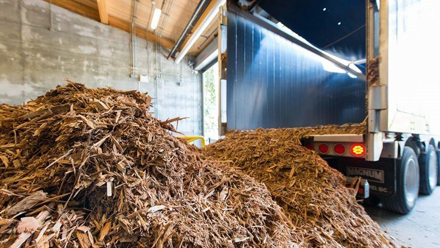
Bioenergies, including wood, biofuels and forest-based industries, should be recognised under the EU’s draft sustainable finance taxonomy, in line with the recently-updated renewable energy directive, an industry coalition has claimed. Source: Euractiv
The EU’s draft taxonomy for green finance is “undermined by significant divergences” with the EU’s renewable energy directive, according to a joint statement by 10 industry associations involved in the forestry and bioenergy sectors.
“This lack of coherence casts a shadow over the likelihood of achieving long-term EU climate and energy goals,” the coalition warns.
The statement was published in October by a coalition of 10 industry groups: Bioenergy Europe (bioenergy industries), CEPF (forest owners), CEPI (paper industries), COGEN Europe (cogeneration industry), Copa-Cogeca (farmers and agri-cooperatives), EBA (biogas producers), EOS (sawmill industry), ePURE (ethanol producers), Euroheat & Power (district heating), and EUstafor (forest managers).
At the heart of their demand are sustainability criteria for biomass, which are set out in the EU’s renewable energy directive but aren’t reflected in the EU’s green finance taxonomy.
The taxonomy “should mirror the sustainability requirements agreed in the Renewable Energy Directive,” which was updated in 2018 after two years of negotiation, the industry coalition claims.
Sustainability criteria aim at discouraging farmers from growing energy crops instead of food, a phenomenon known as indirect land use change, or ILUC, which is blamed for pushing up food prices and causing deforestation in places like Indonesia and Malaysia.
“Only high ILUC risk biofuels must be excluded” from the taxonomy, the industry coalition writes in reference to imported palm oil blended into biodiesel. It argues for the full implementation of sustainability criteria contained in the renewables directive “before opting for an untested, top-down designed new set of requirements” set out in the EU’s green finance scheme.
Last year, the European Commission drew up an EU-wide classification taxonomy in order to channel private investments into clean technologies and assess whether an economic activity is environmentally sustainable or not.
“We want to protect EU consumers and investors from greenwashed financial products,” said Vladis Dombrovskis, the EU commissioner in charge of financial services. “So the taxonomy will provide common definitions for what is a green investment, based on scientific evidence,” he explained in a recent speech.
Up to €290 billion of investments will be needed every year in order to bring global warming emissions down to net-zero by 2050, according to Commission estimates.
But the draft taxonomy came under heavy fire from the gas industry, which called for the inclusion of biomethane in the list of sustainable economic activities, in line with the renewables directive. Gas should also be rewarded under the EU’s green finance scheme when it displaces coal in electricity generation, they claimed.
Green activists, for their part, are opposed to legislation that encourages burning wood for heating and electricity generation. Earlier this year, they filed a lawsuit against the European Union for recognising biomass as a carbon-neutral source of energy.
“The treatment of biomass as carbon neutral runs counter to scientific findings” showing that burning wood for energy typically emits 1.5 times more CO2 than coal and 3 times more than natural gas, the plaintiffs pointed out.
Activists are also opposed to biogas use in transport, saying vehicles running on biomethane can equally run on fossil gas, with no way of verifying what type of fuel actually went into the tank.
“Our position is not to close the door completely to bioenergy, but to ensure traceability across all sectors, and to be able to verify carbon emissions over the entire life cycle – which requires much more stringent criteria, especially in the green taxonomy developed by the Commission’s Technical Expert Group,” said Sébastien Godinot, an environmental activist at WWF.
Wood is currently the EU’s largest single source of renewable energy, accounting for close to 60% of all renewables consumed in the EU – considerably more than wind, geothermal, hydro and solar put together.





